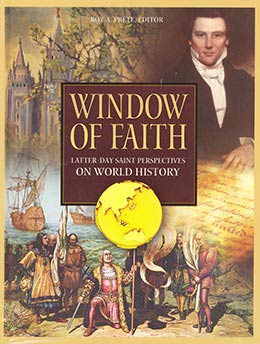To All the World
The final section of this book is focused largely on the twentieth century. Building on the themes of the rise and spread of freedom and the technological development discussed in the foregoing section, this concluding section deals with the preparation of the world and the preparation of the Church for the divine mission of taking the gospel to the entire world.
The twentieth century has been a century of great turbulence, the most violent of all centuries to date. Was the troubled era of the two world wars and the Great Depression part of the “chastening hand of an Almighty God” upon the inhabitants of the earth, which Joseph Smith prophesied? (D&C 87:6) Brian Q. Cannon explores this topic in his chapter, “Chastisement of the Nations, 1914–45,” through the prism of the statements of modern prophets, apostles, and other Church leaders. His conclusion is that mankind brought these predicted evils upon itself by its failure to comply with correct principles. After the ravages of World War I and the failure of the peace, Church leaders showed much less enthusiasm for the second world conflict than the first. Separating themselves to some degree from any national agenda, they denounced war as an institution but defined how soldiers fighting on both sides of a conflict could be justified in following the direction of their respective sovereignties. This stance was a fitting adaptation for the requirements of a worldwide church.
How do other providential European historians—such as Reinhold Neibuhr, Christopher Dawson, and Herbert Butterfield—see the hand of God in the historical process? Malcolm R. Thorp, a recognized expert on Butterfield, in his chapter, “Herbert Butterfield on Tragedies and the Promise in the Twentieth-century Historical Experience: A Reappraisal,” compares the views of Butterfield on God’s intervention in the historical process with those of the Latter-day Saints (to the extent that these have been defined). Butterfield is a unique case in point. Basing his interpretation of world history on a paradigm derived from the covenant relationship between God and man in the Old Testament, he develops a model not far removed from Latter-day Saint views in which human failure to live up to divine potential and promises leads to calamity, but a calamity from which God derives higher purposes.
The further review of God’s seeming nonintervention in all the dark and macabre events of the twentieth century is the task of Douglas F. Tobler’s chapter, “Good from Evil in the Twentieth Century: Transcending Totalitarianism, Wars, and the Holocaust.” Tobler’s reflections are the distillation of a lifelong consideration of German and intellectual history and the relation of the disasters of the twentieth century to the violation of gospel principles. Europeans, he concludes, brought these destructions upon themselves by their departure from Christian principles and the espousal of ideologies that denied human rights and freedoms. Tobler argues that God’s purposes have been served, nonetheless, in that the postwar situation is much better than that before the Second World War in terms of freedom and human dignity. He views the fall of the Iron Curtain and the extension of freedom to the lands of eastern Europe as a particular manifestation of the hand of God. God is ultimately in charge, he concludes, and can extract good from evil despite the ravages of human folly.
Distinguished scholars Robert S. Patterson and E. Dale LeBaron, in their chapter, “Preparing the World and the Church for the Preaching of the Gospel since 1945,” link the preparation of the world to receive the gospel to the growth and progress of the Church, which enables it to undertake the worldwide mission of taking the gospel to all the earth. The extension of freedom in opening the doors of the nations, and the remarkable benefits of modern systems of transportation and communication in the postwar world are highlighted. The development of the Church has occurred administratively in simplified and correlated programs; doctrinally with the revelation on the priesthood in 1978; financially in no longer requiring member contributions for meetinghouses; organizationally with the establishment of the Quorums of Seventy; and geographically in accelerated temple building and in other ways. These changes have helped it to cope with the exponential growth experienced since the end of World War II. From 1947 to 2003, Church membership, as a result, has grown from one to more than eleven million as the Lord has accelerated His work.
But one should remember that “by small means the Lord can bring about great things” (1 Nephi 16:29). In the final chapter, veteran scholar Richard O. Cowan gives an insightful and ringing appraisal of the means by which the Lord has extended His gospel and built up His Church since the days of the Restoration. While large forces and trends provide the underpinning for much of Church development, this chapter provides support for the view that in specific cases God has worked through a rich and manifold variety of small means in establishing a foothold for His Church in many locations and in preparing people and circumstances for its growth in many regions of the world. Those who are intimately associated with the Lord’s work may anticipate even greater instances of the manifestation of the Lord’s hand, for as President Hinckley has said, despite the remarkable growth of the Church, “We have scarcely scratched the surface.” [1] The manifestation of the Lord’s hand will be needed with ever greater power to counter the cascade of evil of our times (see D&C 1:35–36), as the Church extends its reach across the world.
Notes
[1] Gordon B. Hinckley, “The State of the Church,” Ensign, November 2003, 7.
